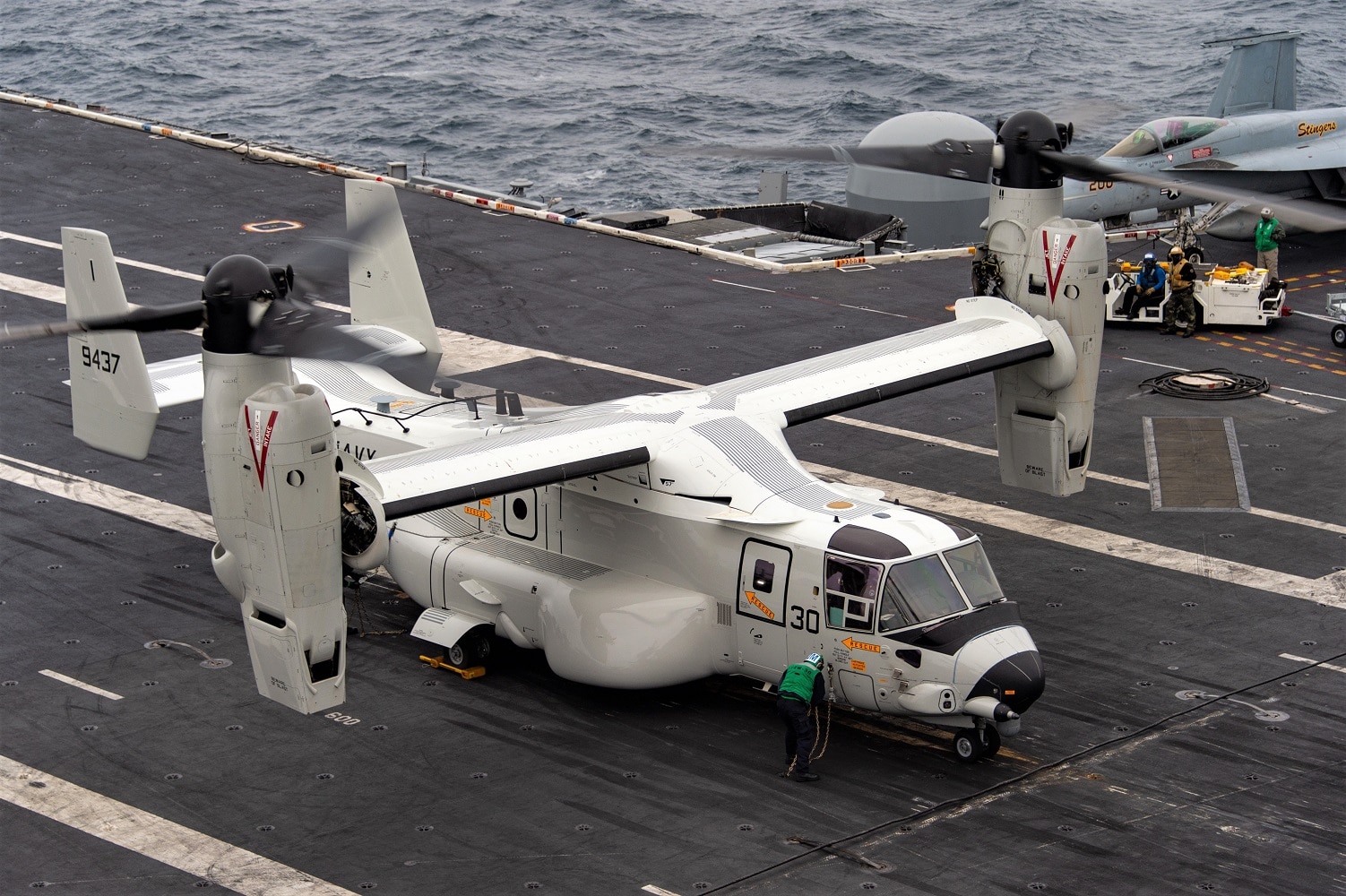The US Navy’s new CMV-22B Osprey has demonstrated itself as a ‘game-changer’ platform in its first deployment, according to the US Navy’s Air chief.
The CMV-22B is a variant of the V-22 Osprey, a multi-mission, vertical-takeoff-and-landing (VTOL) tiltrotor aircraft designed to combine the functionality of a conventional helicopter with the long-range, high-speed cruise performance of a turboprop aircraft.
“It (CMV-22B Osprey) proved to be a game-changer for us on deployment,” Vice Adm. Kenneth Whitesell, commander of Naval Air Forces (NAVAIR) and Naval Air Force, US Pacific Fleet, said on July 15, during a Maritime Security Dialogue event on Naval Aviation hosted by the Center for Strategic & International Studies (CSIS) and the US Naval Institute.

The new Osprey achieved its initial operational capability in December 2021 during its maiden deployment on the US Navy’s Nimitz-class supercarrier, USS Carl Vinson, in the Pacific, which coincided with the first-ever forward deployment of the F-35C as well.
New Osprey Will Replace Existing Greyhounds
The CMV-22 is supposed to replace the US Navy’s existing C-2A Greyhound as a carrier onboard delivery (COD) platform to support the deployment of F-35C because the C-2A cannot ferry the heavy F-135 engine of the Navy’s only carrier-capable fifth generation, long-range stealth strike fighter.
Powered by the two Rolls-Royce Liberty AE1107C engines, each delivering 6,200 shaft horsepower, the CMV-22B can transport up to 6000 pounds (2721.55 kilograms) of cargo or personnel over 1,150 nautical miles (2129.8 kilometers) range.
The C-2A, powered by two Allison T56-A-425 turboprop engines producing 4,600 shaft horsepower, has a slightly lesser range of around 1000 nautical miles (1852 kilometers).
Furthermore, the CMV-22 can conduct nighttime COD operations, which is a significant improvement over the Greyhound, as it provides more opportunities for the aircraft carrier to receive supplies.
This was evident when Whitesell stressed “the ability to bring a CMV-22 aboard a carrier at night,” saying the Navy has been “reticent in the past” to allow Greyhounds to do night carrier landings “based on the avionics in that platform.”
Also, the C-2A Greyhound was launched using catapults and recovered with an arrested landing, needing the crew aboard the aircraft carrier to ensure that the equipment was always working.
The CMV-22 can take off and land vertically, offering more flexibility in getting the cargo up and around a theatre.
“The ability to get it (CMV-22) on and off the deck in a rather rapid fashion, I don’t have to clean catapults 3 and 4 up and land a COD; now I can land it just like a helicopter,” said Whitesell.
The VTOL capability of the CMV-22 also makes it suitable for medical evacuations, as the medical personnel no longer have to worry about the effect of the massive launching force of the catapults on the patients.
“It’s not a catapult shot that now the senior flight surgeon has got to worry about. Now we can fly somebody off – we can fly somebody off immediately for that,” Whitesell noted.
While the Program of Record has 48 CMV-22 projected, the Navy plans to procure only 44 aircraft, according to NAVAIR’s factsheet on CMV-22, which was last updated in February 2022.
Concerns About CMV-22’s Operational Suitability
There have also been concerns about the CMV-22’s ‘operational suitability,’ as reported by Bloomberg News in February, just as the US Navy official declared the IOC achievement of the new Osprey.
The CMV-22 only “partially met reliability requirements,” reported Bloomberg citing a non-public assessment of the Pentagon’s testing office.
This non-pubic assessment reportedly found that the new Osprey’s Ice Protection System was responsible for 25% of the COD aircraft’s operational mission failures, resulting in mission aborts.
The Ice Protection System is responsible for preventing the ‘aircraft icing’ – atmospheric moisture from accumulating on aircraft surfaces, such as wings, propellers, rotor blades, engine intakes, and environmental control intakes – that could otherwise increase the aircraft’s weight and drag, thereby decreasing its lift and thrust.
Furthermore, there were problems with aircraft High Frequency (HF) radio required for the beyond-line-of-sight communications to support the Navy’s operations far from shore. The HF radio was reportedly found to be “inconsistent, demonstrating a 12% success rate for long-range, two-way communications,” according to the assessment.
Despite these issues, the test office found the CMV-22B Osprey as operationally effective for COD missions, medical evacuation, Naval Special Warfare support, and search and rescue missions, according to Bloomberg.
Likewise, even Whitesell concluded about the CMV-22 that it was “safe and efficient on its first deployment.”
- Contact the author at tanmaykadam700@gmail.com
- Follow EurAsian Times on Google News